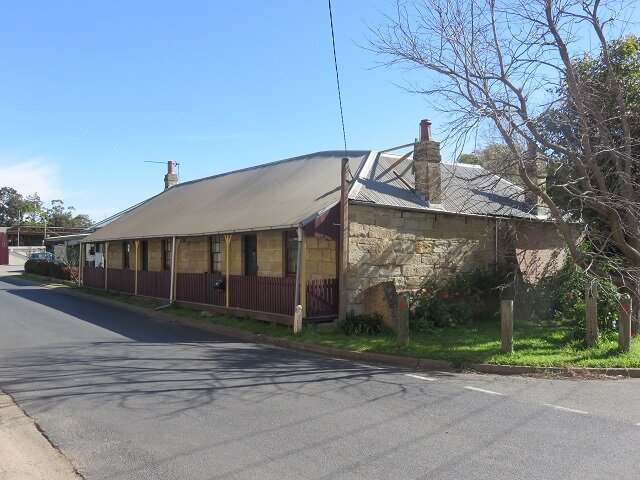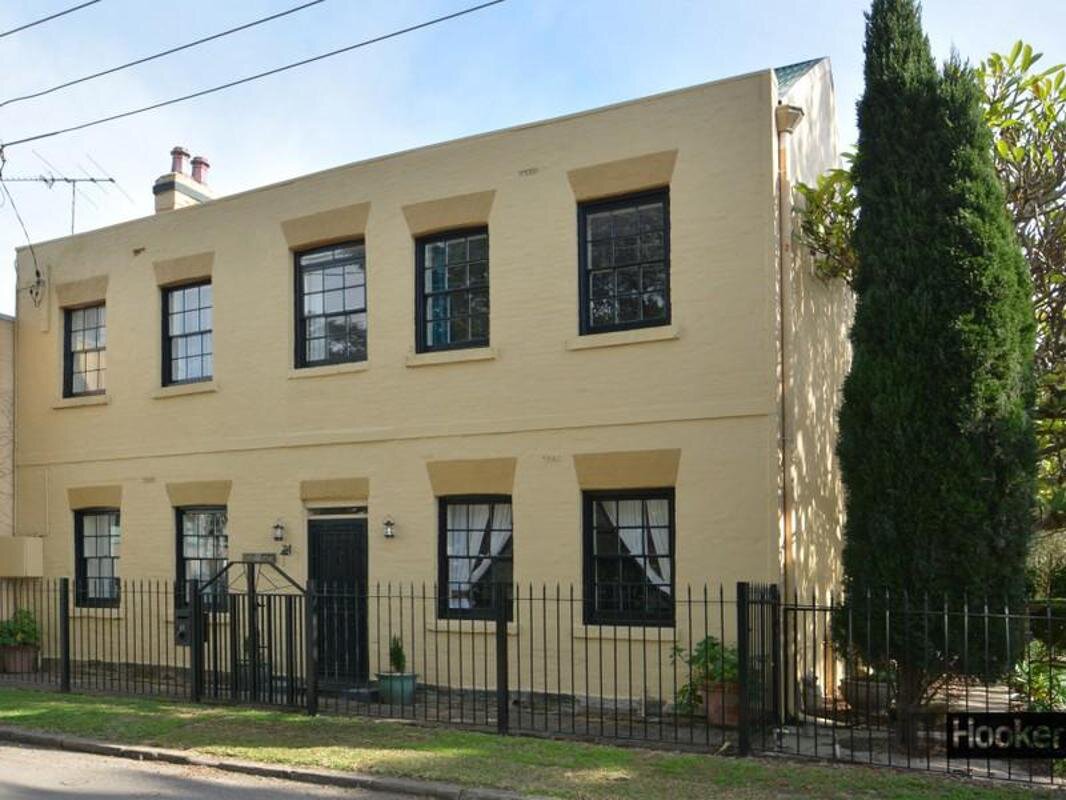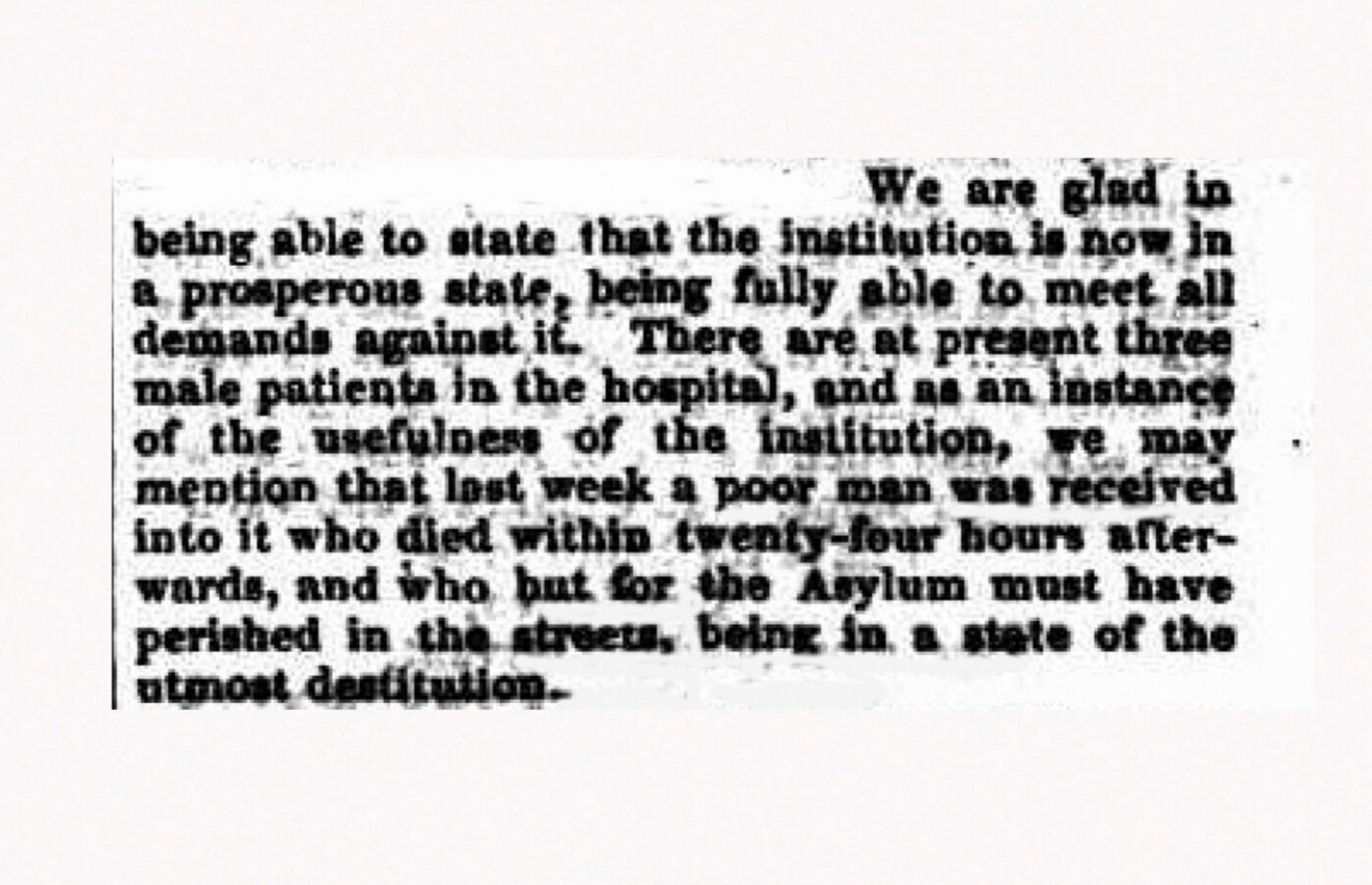Asylum to the sick and destitute.
Public health care in early nineteenth century New South Wales was very basic. The colonial government established the first hospitals but they were specifically for convicts, military personnel and occasionally for private patients provided they paid. They were also not very sanitary or appealing institutions.
Sydney Infirmary (later Sydney Hospital), 1870s.
Photo attributed to Charles Pickering.
(State Library of NSW)
Established in 1816, the hospital early attracted the name the ‘Sidney slaughter house’.
The expectation was that free settlers would look after their own health care including the health of servants assigned to them. There were handbooks and manuals to provide advice, medical practitioners who could be paid to provide treatment and basic surgery in the home, and some private hospitals emerged. The reality was, however, that there were settlers who were unable to access medical services. They became the focus of charitable organisations.
In Maitland, a local Benevolent Asylum was formed in 1842 in order ‘to afford an asylum to the sick and destitute, and to disperse medicine gratis to the poor’. Following models elsewhere in the colony, it was financed by local fundraising efforts and by residents who provided annual subscriptions of £1 that entitled them to recommend three patients per subscriber per year. Local doctors gave their services for free.
The emphasis was on providing medical services not on offering long-term accommodation. The latter was available through the Sydney Benevolent Asylum, and the Maitland institution sent long-term homeless men there.
Maitland Mercury, 1 July 1843 and 21 October 1843
A key concern for the new Maitland organisation was to find suitable and affordable accommodation for inpatients. The former Caroline Chisholm Immigrants Home was available and the Asylum was set up there. The only resident staff member, ‘a prisoner of the crown’, was appointed in April 1843.
The Caroline Chisholm Cottage rapidly became inadequate and by September 1844 the intention was ‘to occupy a two-storey brick house, with eight rooms, in a healthy situation near the Long Bridge’. This was Hannan House. The Asylum was located there for the next four years.



In January 1845 the Asylum’s annual report proudly noted that, despite ‘these times of unequalled depression’ (referring to the devastating 1840s economic depression) over its 24 months of existence, medical assistance was given to about 115 individuals and some financial support obtained from the colonial government. The report noted that, without the Asylum’s assistance, many of the patients ‘would perish in the streets’. The report also offered an explanation echoing values of the time for why so many in the community were destitute:
In a community constituted as this is, composed of a mass of people separated from their homes and families, and forming no new links of association in a strange land, frequent cases of destitution must occur. Many have from recklessness and vicious tendencies wasted their best days and their substance in pampering their vicious propensities; many from misfortune or incapacity have been despoiled of their means of existence.
Hannan House quickly proved inadequate. In 1849 it was described as being overcrowded, unable to cater for the number of patients and also ‘being impossible to keep the rooms and beds clean and free from vermin’. By this time the community had successfully lobbied the colonial government for financial support and, most importantly, for financial and other assistance to build a new facility on a new location. The emphasis was on providing health care, not long-term accommodation and assistance. The term ‘asylum’ was dropped and The Maitland Hospital – ‘a conspicuous object’ – emerged.
Note: The Maitland Benevolent Asylum of the 1840s is sometimes confused with the later Maitland Benevolent Society which was formed in 1867 with its premises, Benhome, in Regent Street, opened in the mid-1880s.
References and resources
13 Hannan St, Maitland, Realestate View, 2017
Caroline Chisholm Cottage, NSW State Heritage Register
Cummins, C.J., A History of Medical Administration in NSW 1788-1973, NSW Health, Updated version, 2003
Defining moments - first public hospital, National Museum of Australia
Godden, Judith, ‘Hospitals’, Dictionary of Sydney, 2008
Hannan House, Free Settler or Felon?
Hobbins, Peter, ‘Tending the body politic: health governance, benevolence, and betterment in Sydney, 1835-1855’, Health and History, 19/2, 2017, pp. 90-115.
Maitland Mercury
McCormack, Terry, ‘Benevolent Society and Asylum’, The Dictionary of Sydney
Pearn, John, ‘”where there is no doctor”: self-help and pre-hospital care in colonial Australia’, Health and History, 14/2, 2012, pp. 162-180
Starr, Fiona, ‘How the “Sidney slaughter house” got its name’, Sydney Living Museums



